To abandon the spaceship critique does not mean to forsake it, or that you can even ever forsake it. It doesn’t mean that you haven’t been forever contaminated by the critical atmosphere in the space capsule. You bear the alienating/emancipating ambiance inside, within the fiber of your being. 20th century criticism created new maneuvering spaces, and you are leaving it to conceive of different, critically-filtered premises, so that you don’t become prematurely fossilized in “post”-type analyses. Post-structuralism (to take a “post” at random) made way for other universes to build, new perimeters of meaning to sketch.
In Return to Spaceship Earth the exit from critique is only partial, even though “cosmic artifacts” of primitive flavor float around, we don’t fully trust them. They have something “pre” in them, through the rudimentary mortar inscriptions, but also traces of the postmodern, through a certain irony that implies distance. There are political issues articulated in different ways but there’s also aimless flying.
Wormholes between worlds? We don’t know. We must start from the fact that we don’t know what we see. We can only ask ourselves: what could it be?
We must attempt a double posture. To be outside and inside, inside meaning immersed in action (or surface) and outside, observing with the 20th century lucidity.
We step out of the spacecraft of institutional critique, but we’re not the same, it must be visible that the voyage has altered the astronauts; in their sleeping pods or involuntarily awaken in the cosmic drift they should have merged with ideals of emancipation, with xeno-ontologies, with a third sex (Xenogenesis Trilogy, Octavia Butler).
The contamination and in-door germinations must be felt also outside the critique capsule. Wherever the colonists or explorers (Black Box, Florin Flueraș) arrive, they must have been intimately modified by the unending journey. By now they already think in “pre” terms, the affective disposition is changed. That is, in case they reach a destination, unless in the meantime the cockpit has become the new habitat, or the new destination is in fact the point of departure, modified in such a way by spatio-temporal distortion that it has become unrecognizable (Exit the Portal: The Strange Comeback to a Weird Earth, Ștefan Tiron).
The political erupts through explicitly critical statements strewn in various quantities throughout the works in the exhibition. But through its title the ensemble remains under the forever fresh and generous auspices of Buckminster Fuller.
Once we emerge in the open “air”, we quickly notice that, like in Alien: Covenant (2017), no sound can be heard, nothing living, not even a bird or an insect. And yet the air is breathable. The vegetation seems healthy. Like Bowie says, “leave the capsule if you dare”. How do we navigate beyond critique?
How do we navigate through “pre” periods, instances bearing in them the future, through ambiances and territories in pre-formation, through incipient aggregations and chained disaggregations?
The exhibition is flashy yet you feel yourself decomposing.
We are caught between generative and inhibitive nostalgia. Through the Russian cosmists, we are surely in the wake of a generative nostalgia. Futures pending. Scenarios of ideological anticipation that from the onset have set out to go beyond the borders of the present or the near future, and to travel so far in time that you won’t be able to tell if you’re at the beginning or at the end. Behind every utopian corner a dystopia lies in wait.
In the sketch titled The Astronaut, The Robot, The Alien (Extra Terrestrial Ecologies Retroflect), proposed by Ralo Meyer for the exhibition space at Salonul de Proiecte, I had the feeling Ronald McDonald was hiding under one of the characters’ white sheet. Or ET in clown shoes, a future non-human family in perpetual motion, like the future itself, oscillating between nightmare and ontological orgy, according to the conditions of the present. Hidden behind various camouflages (or “scramble suits”, P. K. Dick), in the special effects halo generated by the projector, anything could hide. Perhaps the three characters define the cyber-gothic of late modernity, the astronaut, the robot, and the alien, heroes of future historical entertainment. When there will be no more astronauts, because traveling between fictional and physical spaces will have become imperceptible, when post-human bodies will no longer need to be suited up, protected, in a cosmos where the descendants of humans will be able to breathe. When the 20th and 21st centuries will be the prehistory of a world still hard to imagine.
Hermetically sealed spaces, air-tight capsules, the paradoxical heritage of the space age. Mall experience, like a decades-active future. As if we’re training every day for the great galactic colonization. What’s fascinating about malls is that you can even be on Mars, on a space station orbiting around Europe (Jupiter) or any other natural satellite that looks promising in sustaining life.
Killing Utopias
Throughout the videos and works in the exhibition there are political recollections, rousings from oxygen deprivation-induced hallucinations. As I was saying, behind every utopian corner a dystopia lies in wait. John Geddes’ spectacular illustrations of biospheres in orbit gain a dystopian consistency in Elysium (2013). In Ralo Mayer’s film we are permanently carried over real and sci-fi times, personal chrono-teleportations overlapped on global symptoms, projects for futures already pending for a hundred years. From local to global in a fraction of a second, from personal (molecular) to general (molar) in a single stroke of montage.
For a moment, on the cosmic artifacts there seemed to be writing in an archaic language of the future, something incomprehensible, not recognizable phrases that have meaning in our language (English), but rather unintelligible pseudo-hieroglyphs.
Indeed, the only contemporary relevant way to commemorate, celebrate, or mention the October revolution of 1917 is through the cosmists, therefore before it. Because in the preamble of the revolution, the cosmists were already thinking about the times of the post-revolution.
Cosmism is on the rise, and rightfully so. The feeling of fake future dominates the ambiance. Seems like we have to turn back to the “pre”, to see where things took a wrong turn. But let’s focus rather on the current “pre”. Let’s echo the Russian model, where first there were the cosmists, then the avant-gardes, and then the revolution followed. In our incipit stage we must create the premises for a radically different future, for a new imaginary, an aesthetic severed from man (the way we currently understand him). For a revolution to take place, it must project a perimeter of meaning beyond content, in shapes, geometries, affects and social organizations that can contain and accommodate xeno-communist ideologies, or any other massive egalitarian project.
Let’s move the sequoia tree in space. If a mere tree can humble and overshadow man in such a way, the indifference of the cosmic infinity is beyond unbearable.
The ideologies of the 19th century were already germinating socialist utopian projects, societies comprised of self-sufficient communes, phalanstères. But anticipative literature and the avant-garde were constructing aesthetical horizons, experimenting with unfamiliar subjectivities, trying to address the problems of future dwellers, long after the success of the revolution. Russian pre-revolutionaries had to invent for the post-revolutionary society an aesthetic universe, propelling concepts with which to blast off from the planet of capitalism, but also from planet Earth, especially if, according to Fedorov, revolutionaries from all ages were to be resurrected. The colonization of other planets became a logistic matter essential to any revolution.
They were imagining a new prehistory.
When you climb towards Bulgaria’s Communist Party’s headquarters on mount Buzludzha, but also when you enter the “flying saucer”, the feeling is that in the ‘80s overcoming capitalism was obsolete, a joke even. There, on the peak of the mountain, party members had crafted themselves an engineless spacecraft, a gigantic simulacrum prototype for the eventual revolutionary cosmic journey. Party members, seated in a circle in the huge hall were suddenly proto-astronauts, a hand-picked crew that was to colonize the galaxy on ideological grounds. The Bulgarian communist party headquarters seen as a simulator on a 1/1 scale.
Inside, in the center of the Bulgarian “spacecraft”, if you look up, on the radius of the center of the congress/fuselage hall’s dome it seems to say: “Workers of the galaxy, unite!”
In the prehistory of the Bolshevik revolution the cosmists weren’t dreaming about an “international”, but, rather, of a “galactic”.
And today, amid the planetary environmental degradation, a phenomenon cumulated with the overpopulation so often brought up after World War II, returning to the cosmists seems an imperative. Yet nowadays, colonizing other planets is a further ideal than it was for the Russian cosmists. Konstantin Tsiolkovsky was predicting unflinched when it would happen: right in 2017. He had an unfaltering faith in humanity’s cosmic future. The space program for the next hundred years seemed sketchable. And until a certain point, around the ‘70s, hopes were vigorously maintained. Through the persistence of the soviet space program, cosmic mega-programs still seemed tangible. The politico-space race sparked imagination on both sides of the Iron Curtain. But the Cold War froze in space, in the white smoke left behind by the Challenger’s explosion, in the economic and bureaucratic collapse of the Soviet Union in the ‘80s. With the political fuel depleted, cosmist programs started drifting throughout the cyberspaces of the ‘90s. With the fall of the Iron Curtain, there was a return to the inner, to the abstract, imagination shifted the focus on the virtual. Cyber-punk hyperstitions began to make themselves real. If we can’t colonize the exterior universe, then we shall build countless virtual (inner) universes, we’ll go full throttle into fiction. Building fiction generators, mining money (crypto-coins), making social spaces where leftist and libertarian projects that failed in the physical capitalist world (that of monopoly and permanent cooptation) will find a new home. Fictions so palpable that they would expand on their own and self-accelerate with each web update 2.0, 3.0. The cyber-colonization of hitherto inexistent space was the only answer to the cosmic colonization failure. Fake future, simulacrum, cosmist disappointments, those can become the immaterial relics of a new antiquity. But, simultaneously, capital saw the same potential, that of developing vast networks of global communication ruled by cyber-elites.
Consequently, before any revolution we need a journey through space-time, along with a cognitive voyage beyond the limits of contemporary human perception. An attempt to bridge the infinity of the cosmos (and imagination) with the finitude of human existence (and morality).
If we can’t conquer outer space, humanity invented a new “space”. Human consciousness needs infinity in proximity. When the explorers of the renaissance realized that the ocean was finite, Europe was surely very disappointed.
Also for the dreamers of the ‘60s-‘70s, our present (i.e. their future) would be a great disappointment. “Hybrid” cars would leave Sci-Fi enthusiasts unimpressed.
Current resignation could be illustrated as the USS Enterprise wrecked in a Lagos slum.
The book presented by Ștefan Tiron in the discussion that preceded the opening, Psychology and Space (Y. Gagarin, V. Lebedev) sends us back to the ice age, in an encapsulated tropic somewhere in an arctic abyss, still intact after millions of years.
Futurology and 20th century social science fiction (sprouting from seeds sown in the 19th century) projected macro-leaps, everything had to be gigantic, progress and technological advancement could only lead to something physically dwarfing, colossal structures, space journeys, flying cars, teleported bodies, everything seemed concentrated on conquering the exterior. The empty space outside, escaping the sphere, reverberating with the colonialism that was reaching its peak at the end of the 19th/beginning of the 20th century, expanding maximally outside the “center”. But with the death of the Cold War space race, with industrial collapse, with the dismantling of the proletariat, with the complexification of global hierarchies, everything became enclosed within a new “space”: the internet.
Political competition in two forms: Space race and art race.
What the exhibition, its ambiance, is “lacking” is the paranoia, the CIA that, with its own funds, would tour the American avant-garde throughout Europe. We could make an unneccesary add-on.
The dystopian SF Running Man (Stephen King, 1987) also takes place in 2017. Beginning with the ‘70s-‘80s, the torrent of apocalyptic scenarios in the SF genre spoke more about the present, defying realist literature’s innability in keeping up with the times. And with the failure of conquering the great beyond, social science fiction focused on Earth’s future, on future societies, rendering most often nightmarish scenarios, be they in the branch of cyberpunk (William Gibson, Bruce Sterling, Noel Stephenson), feminist (Margaret Attwood) or proto-xeno-feminism (Octavia Butler).
The city of Datong in China, for a while, became the epitome of Chinese hypertrophied postmodernism. Mayor Geng Yanbo, resolute in his mission to industrialize culture on a macro scale, began a mega-project of rebuilding the ancient city from scratch on the site of the “authentic” one. The actual architectural patrimony (or rather its residues, a pseudo-slum whose inhabitants still, after thousands of years, live in abject poverty, and with this occasion were brutally relocated) razed to the ground, and in its place a replica, a theater set, a mockup of fresh painted “pre” was erected. Some of the scenes from the documentary The Chinese Mayor (2015) often seemed bizarre excerpts from The Autobiography of Nicolae Ceaușescu (2010), overlaid on a dystopian yet somewhat familiar Asian future.
To envision a present through its future ruins (exactly like the Hitler-Speer duo). Datong, a city that already sees itself as a lucrative antiquity of the future.
But the 21st century is already the second antiquity, and China laid the thickest layer of the anthropocene (first place, 20% of global pollution). The mayor – long dismissed, whose project lies in semi-shambles – wanted to re-assemble, to re-polish the original ancient, or rather “antiquity”, understood as the only very distant incipient moment of civilization. But such a reading leaves too close to Baudrillard’s simulacrum. We keep “understanding”, but that’s not very useful. What can we do with this mockup of the first antiquity in our contemporary antiquity. What do all these anomalies germinate, what use can we find to the farces and the artificial of today? How do we perform a shift of perspective, to find an escape from deconstruction and “post”, or at least some evasive manoevres?
It seems we need to develope superior forms of unknowing.
Back in the exhibition, in the film Killing Hope we are well anchored in the critique perspective. Even though we’re lead through a fictional scenario, with quasi-psychedelic animations, the future is even more unclear, and profoundly politically apocalyptic, “Give Up Hope” (The Presidential Candidacy) has become “hopecide”. Everything in the film is shadowed by the hard truths, man has already destroyed the environment, altering it past the point of no return (“future and death are our sole companions”). In the Matrix (1999)-like interrogation, anxiety leaks through every pore.
In Silvia Amancei and Bogdan Armanu’s work One of many possible dialogues starting from the theme of the present, revolution, and death, the questions raised are somewhat simple, partly stripped of engagement, they have something fresh and something nostalgic. What disengages them is their juxtaposition on neo-infantile noir scenes, situations of a pleasant and anesthetizing aesthetic refinement. The photo shoot’s protagonists are themselves in a different “space” and in a moment in time not easy to pin down. Are they vloggers of a pseudo-human future? It’s not clear, they seem too preoccupied with content. The questions are still posed from the perspective of a 20th century critical analysis, following a deconstruction. Paradoxically, the quasi-poetic texts that accompany the images elude the future, a future that from current symptoms seem to materialize more as a surface with nothing “behind”. An all-encompassing plateau with no depth, a laterality that annules the cognitive mechanisms augmented by the printing press and 20th century mass means of communication. The critical apparatus still produces results but it’s not compatible with the cyber-surface. It seems like the citizens of the future will be indifferent to these questions, or will view them like a curiosity of the second antiquity.
Neo-infantilism can be understood as in Robert Silverberg’s short-story How it was when the past went away (1969), where a super-potent drug is slipped by terrorists into a city’s water supply, causing the inhabitants who drank tap water to have their memory completely wiped out.
So everything is to be discovered anew. We tap with our fingers phone apps, they react to our touch, we are happy. We’re suddenly taken by a childish enthusiasm.
The double posture of the contemporary critical act: it is true, but only partly relevant, it describes with accuracy, but it no longer works. It speaks about reality, but for the generation born in the 21st century reality is more artificial than the virtual.
Neo-infantilism is inaccessible to the critical mind focused as it is on the mechanisms behind reality, on depth, on structures and relations of power. It’s like trying to explain the global virality of toys like Kendama or Spinner with Marx’s Capital or Adorno’s writings. Radical primitivism will always ensures its future, precisely because it bypasses the cognitive.
Most likely these worlds and perspectives will coexist and overlap in tension. Yet through collision, they will most probably generate heretic perimeters of meaning.
Translated by Rareș Grozea.
Return to Spaceship Earth is at Salonul de Proiecte between May 24 – June 18, 2017.
Artists: Silvia Amancei & Bogdan Armanu, Ralo Mayer
Curated by: Alexandra Croitoru & Ștefan Tiron
POSTED BY
Ion Dumitrescu
Ion Dumitrescu started with classical ballet, then he went abruptly into contemporary dance arriving to the postspectacle practice in 2008. A practice and a set of performance strategies that he co-in...
postspectacle.blogspot.ro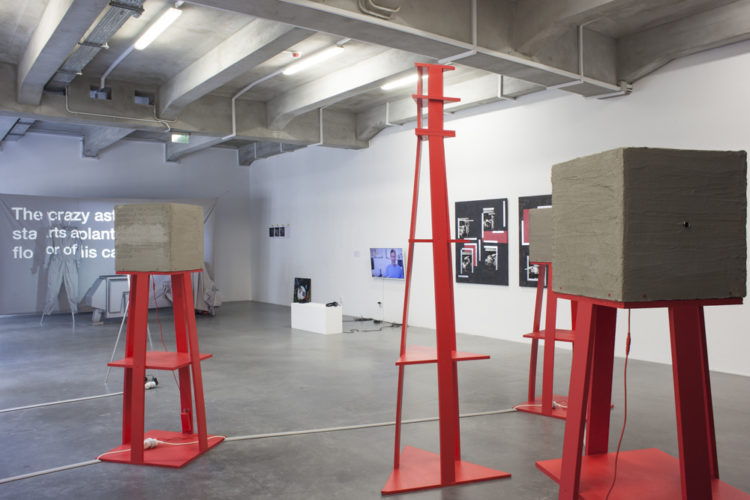
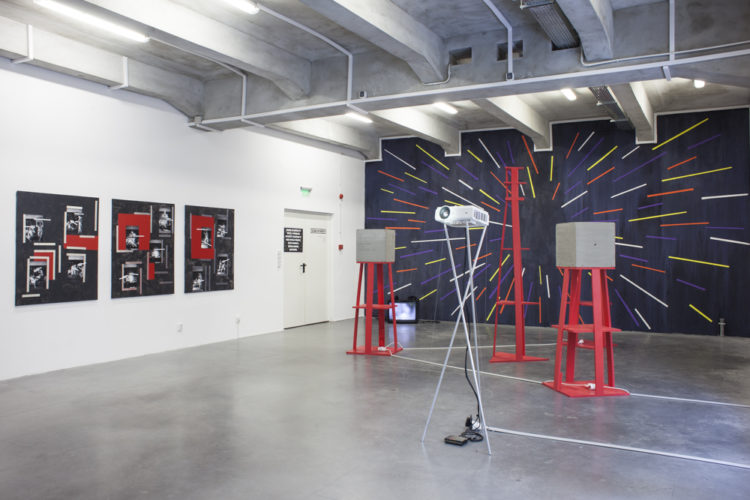
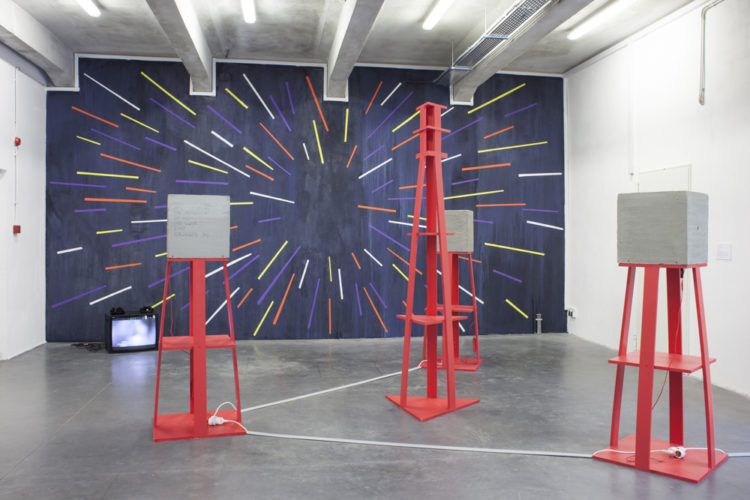
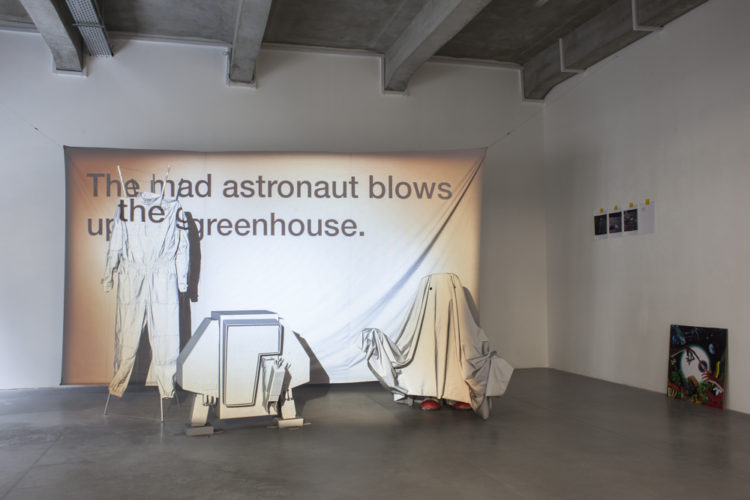
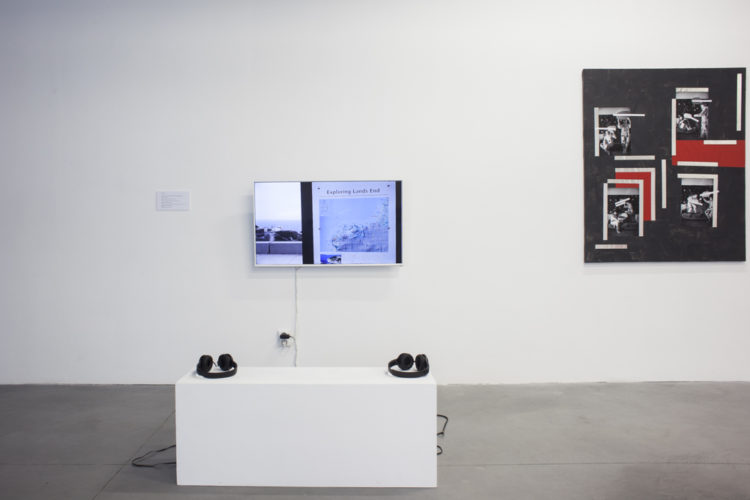
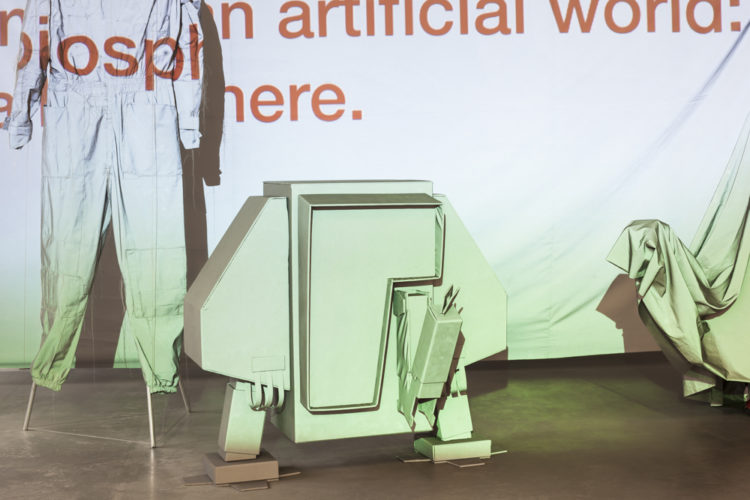
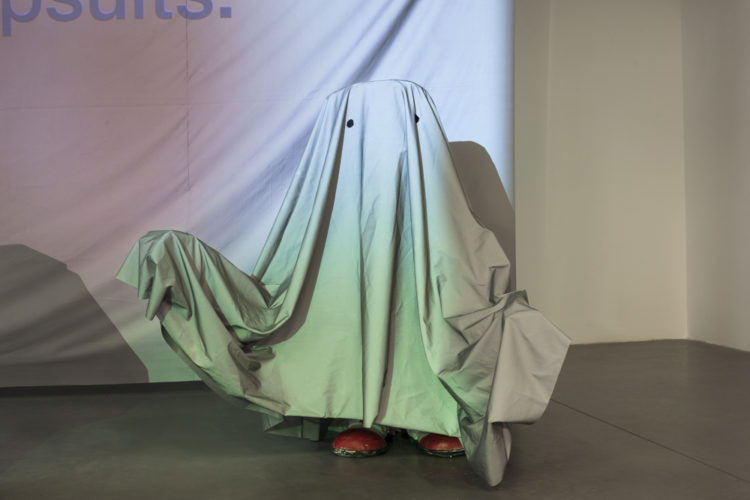
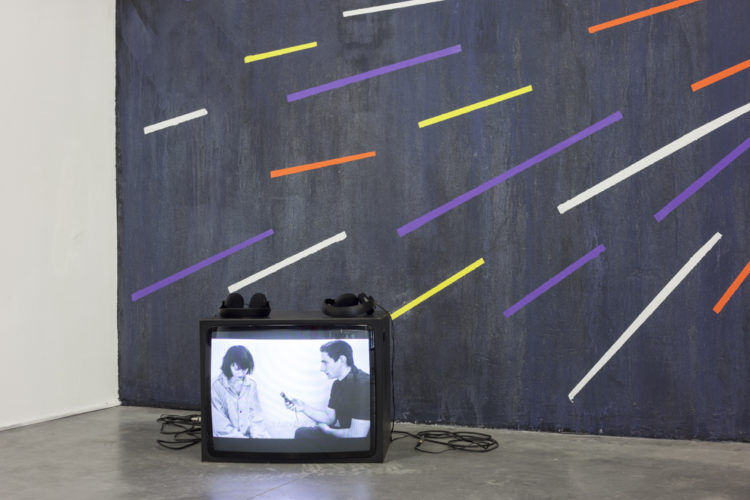

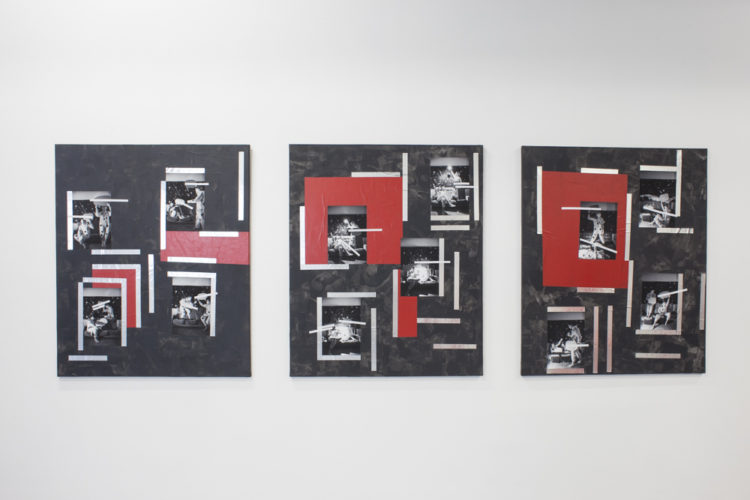

Comments are closed here.